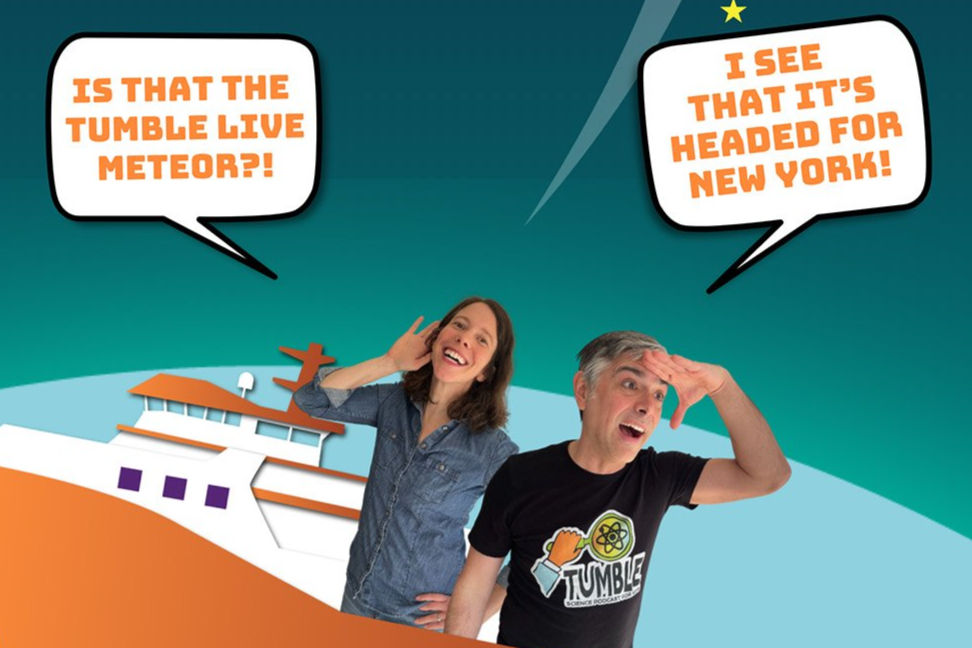Journey to the Center of the Earth with Ta-Shana Taylor | Tumble Episode
- tumblepodcast
- Jan 13, 2017
- 3 min read
Updated: Dec 26, 2025
EDUCATION RESOURCES:
NGSS Standards:
ESS
You might have already learned that the Earth is made of more than you can see. Geologists, who study the matter and processes of Earth, have named and described layers of rock deep inside the planet. But they’ve never laid eyes on any rock beneath the crust - the outermost layer. In other words, we know shockingly little about what’s beneath our feet.

Geologist Ta-Shana Taylor, featured in the episode, likes to think of the Earth as a chicken egg. “Our crust is almost as thin as an eggshell compared to the egg,” she told us. Still, that crust has proved difficult to dig through, as you learned in our podcast. Scientists’ best hopes have been to reach the boundary between crust and the next layer down, the mantle.

“When you hard boil your eggs and crack open the shell, there's this thin membrane that separates the shell from the rest of the egg,” Ta-Shana says. That’s the Moho Discontinuity.
Geologists have called quest to reach the Moho a “moonshot” - a big ambitious scientific undertaking, like the effort to put a man on the moon. Except this is Earth, and we’re so much closer! So why is it hard? Phys.org explains:
The Earth’s mantle is the part of the planet that lies between the crust and the iron ball at its center, and to reach it, would require drilling down from a position in the ocean, because the crust is much thinner there. Even still, it would mean drilling through five miles of solid rock. And if that doesn’t sound hard enough, temperatures increase the farther down you go, and could reach as high as 1,050 degrees Fahrenheit; high enough to render useless most modern drill bits. Last but not least is the problem of atmospheric pressure, which increases the deeper you go, to somewhere in the neighborhood of 4 million pounds per square foot near the mantle. That last one may not seem like much of a problem, but with exploratory drilling, it becomes a problem rather quickly when you remember that it’s not just a hole they plan to dig, but a hole that can be used to extract samples from very far below.
In other words: Deep, hard, hot rock with tons and tons of pressure bearing down on any equipment you might try to use. It’s a big challenge!
Scientists from all over the world are nowhere close to giving up their mission. More expeditions are being planned. And here’s more good news - we have so many deep holes to enjoy that exist on land!
The deepest hole in the United States is in Oklahoma. The result of oil exploration, the “Bertha Rogers hole” is six miles deep. Drilling stopped when they hit a deposit of molten rock heated to 475 degrees Fahrenheit! The drillbit melted. It’s plugged up now, but for a time it was the deepest hole in the world until the Kola Superdeep Borehole passed it.

The Kola Superdeep (!) Borehole is the deepest hole in the world. It was drilled by the Russians, from 1970 - about a decade after Project Moho ended - until 2006. The site is now abandoned and the hole plugged, but the Russians got over 7.5 miles into Earth’s crust. They took samples from the rock in order to learn about the layers of the crust. What they found surprised geologists. The hole turned discovered water much deeper than expected, and microscopic fossils over two billion years old, among other discoveries. It proved how little we know about Earth’s history… and how much we have to learn.
To learn more about topics discussed in this episode, check out our list of Research Resources, available on Patreon!


